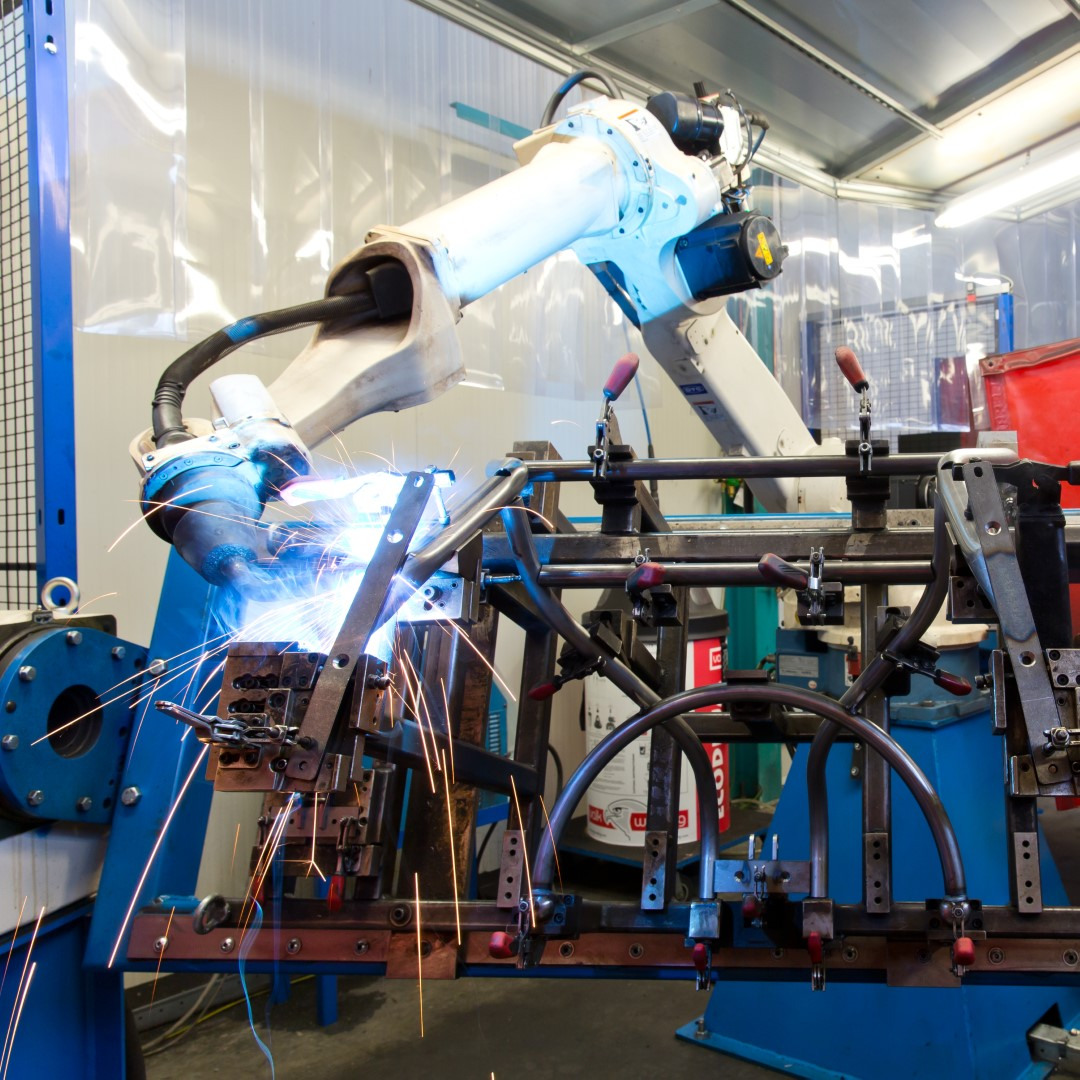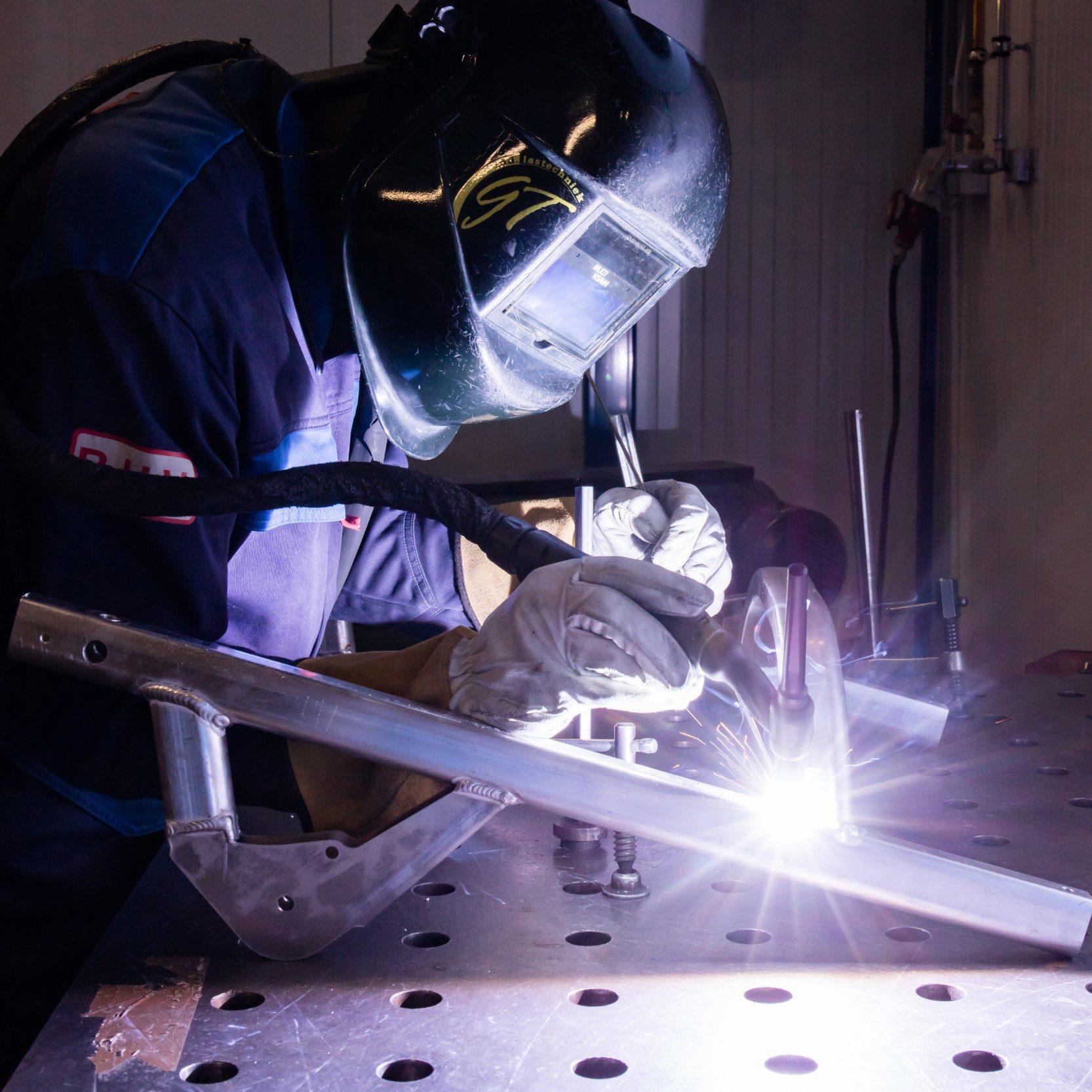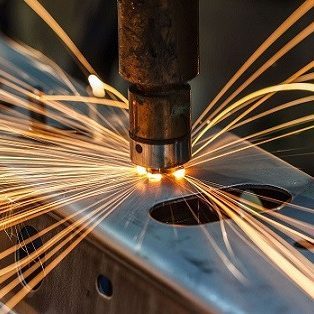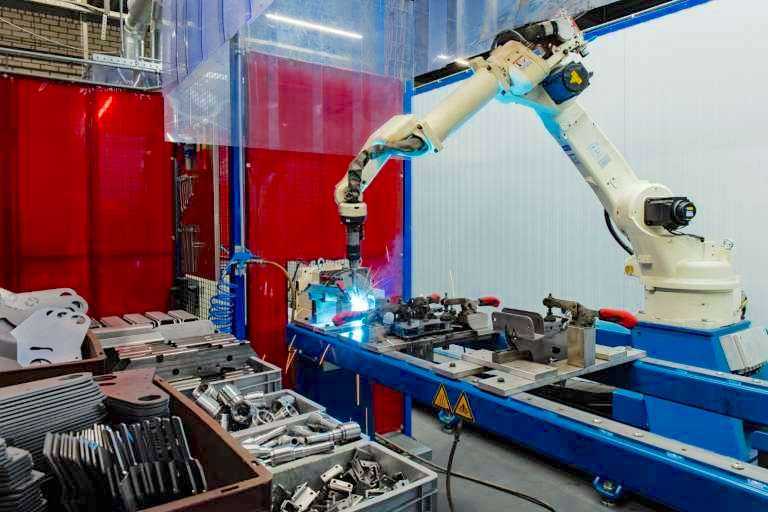How do we do it?
Fully Robotic Welding
Robotic welding is the perfect solution for welding medium and large series. By deploying our welding robots, we can guarantee not only speed but also a very consistent weld quality.
Robotic welding is a highly advanced form of automated welding, where machines perform the welding tasks. However, our engineers, welding specialists, and operators still control, monitor, and oversee the entire process. It is precisely these experts who, with their craftsmanship and passion for the trade, determine the quality. They make the difference by applying their knowledge and experience to create the right welding programs and welding jigs for each welding application.
Robot technology enables precise and fast results, with less waste and increased safety. The robots at Schouten & Visschers are also capable of reaching areas that are difficult to access. They can execute complicated and precise weld lines faster than manual welding.
With our range of equipment, our robots can adapt to various welding processes, including MIG welding, MAG welding, and TIG welding.
We are happy to explain the possibilities and, of course, help you choose the best method for your product.

Difference between MIG, MAG, and TIG welding?
The main difference between MIG and MAG welding is the type of shielding gas used to prevent the material from burning.
The difference between MIG/MAG and TIG welding is the way the arc is established. In MIG/MAG welding, the arc forms between the welding wire and the workpiece. In TIG welding, the arc burns between the tungsten electrode and the workpiece, while the welding wire is fed separately.
Manual Welding
Before welded assemblies are put into production on the welding robots, a prototype phase often precedes this, during which the execution and manufacturability of the product are tested. The welding work involved in this phase is carried out in our manual welding workshop. Small series are also welded here. Additionally, welding operations that cannot be performed by a robot are carried out here, because sometimes a space in a workpiece is too narrow for a robotic welding torch.
Schouten & Visschers has two welding stations equipped with MIG, MAG, and TIG equipment, manned in two shifts by our welding specialists.

Why manual welding?
Manual welding is the ideal choice for single pieces or small production series. Our skilled welders work manually, allowing adjustments to be made easily during the process. This ensures that complex welded assemblies receive the attention your product deserves.
Want to know more?Spot Welding
In spot welding, parts of the product are clamped with high pressure between two copper spot welding electrodes. While high pressure is applied to the material, a large current flows very briefly. The resistance encountered by the current in the material generates localized heat, which creates the spot weld. Because the spot welding electrodes generally have a small diameter, the heat remains very concentrated.
Spot welding is mainly used for joining thin sheet metal (usually between 0.5 and 3 mm). The thickness of the materials does not have to be the same; for example, joining 1 mm to 4 mm is possible. A spot welding machine can also weld nuts and bolts.
We are happy to explain the possibilities and, of course, help you choose the best method for your product.

Advantages of Spot Welding
Spot welding is a high-quality, reproducible, and fast production process. No additional material is required to make the connection (except when welding copper), and due to the short welding time, there is little to no deformation of the products.
What Challenge Do You Have for Us?
Do you have a question about our expertise or machines? We are happy to assist you

